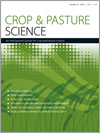CP16393Does increasing plant population density alter sugar yield in high stalk-sugar maize hybrids?
It is important to determine how agronomic practices, for example altering plant population density (PPD), affect stalk-sugar yields of newly developed sugarcorn hybrids for dual-purpose bioenergy–silage crop production in short-season regions unable to grow sugarcane. Increasing PPD from 75 000 to 125 000 plants ha–1 increased stalk sugar concentrations and produced sucrose yield of up to 3.8 Mg ha–1 in some of the sugarcorn hybrids. A PPD ≥100 000 plants ha–1 is required for the dual-purpose use of sugarcorn hybrids.




